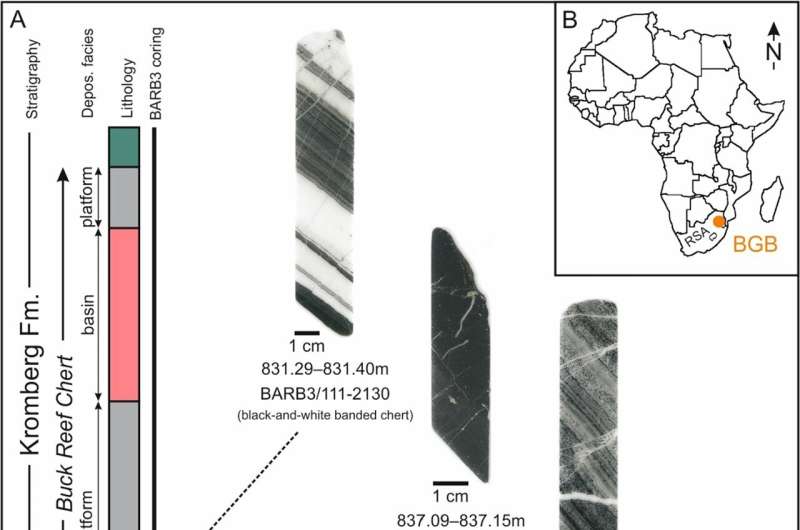This article has been reviewed according to Science X's editorial process and policies. Editors have highlighted the following attributes while ensuring the content's credibility:
fact-checked
trusted source
proofread
Ecosystem from 3.4 billion years ago: New pieces discovered in the cradle of life puzzle

A new study has unraveled key findings about the earliest life forms on Earth. In rock samples from Barberton, Republic of South Africa, researchers were able to find evidence of an unprecedented diverse biological carbon cycle established at 3.42 billion years ago. This proves that already at these ancient times, ecosystems hosted complex microbial communities.
Microorganisms represent the earliest life forms on our planet. Evidence for the reconstruction of early life on Earth is scarce and often highly disputed. It is still not clear when and where life emerged and when early microbial communities diversified.
An international research team led by the Linnaeus University, Sweden and University of Göttingen, Germany reports new puzzle pieces in the assessment of early ecosystem diversity. The scientists investigated 3.42-billion-year-old rocks from the Barberton Greenstone Belt, Republic of South Africa, and were able to unravel different metabolisms involved in an ancient biological carbon cycle. The research is published in the journal Precambrian Research.
Analyses of well-preserved carbonaceous matter and associated mineral phases revealed geochemical fingerprints of photoautotrophs, autotrophic sulfate reducers, and likely methane and/or acetate producing and consuming microbes. This spectacular finding highlights that ecosystems hosted complex microbial communities already at these times.
"Our study opens a rare window into early ecosystems on Earth. We did not expect to find traces of so many different metabolisms. It was like finding the needle in the haystack," says Dr. Manuel Reinhardt, University of Göttingen/Linnaeus University, and first author of the study.
A highlight of the study is the combination of macro- and micro-scale techniques to robustly identify indigenous biosignatures in the rocks.
"In early life science, it is crucial to have supporting evidence from various angles to clearly identify indigenous biological traces," Dr. Reinhardt adds.
"The identification of carbonaceous particles in primary pyrite crystals and the direct micro-analysis of carbon and sulfur isotopes on these materials provided us a rare opportunity to identify different microbial metabolisms in these ancient systems," explains Dr. Henrik Drake, Linnaeus University, senior author of the study.
More information: M. Reinhardt et al, Aspects of the biological carbon cycle in a ca. 3.42-billion-year-old marine ecosystem, Precambrian Research (2024). DOI: 10.1016/j.precamres.2024.107289
Provided by Linnaeus University




















